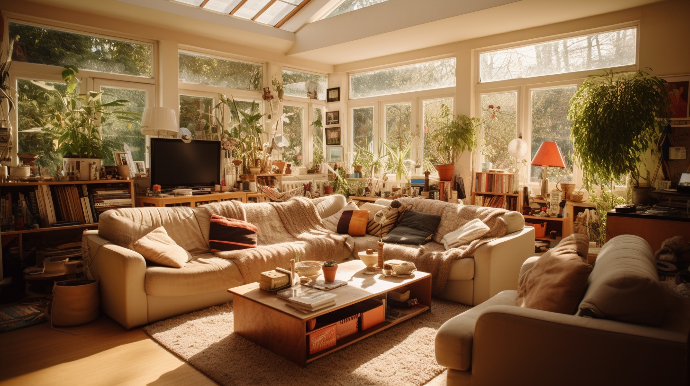Interior design plays a critical role in shaping the functionality and aesthetics of spaces. An essential aspect of interior design is spatial planning, which involves optimizing the arrangement and layout of objects within a given area to ensure efficient use of space. Unfortunately, some interior design projects suffer from poor spatial planning, resulting in inefficient use of valuable space. In this article, we will explore various examples of interior design projects that demonstrate inadequate spatial planning and examine the repercussions of such shortcomings.
The Overcrowded Living Room:

One common example of poor spatial planning is evident in overcrowded living rooms. These spaces often contain an excessive amount of furniture and decor, leading to a cramped and cluttered environment. The failure to assess the size of the room and the appropriate scale of furniture leads to an inefficient layout, which may impede the flow of movement and limit seating capacity. The consequences of such poor spatial planning include a lack of comfort and visual coherence, making it challenging for occupants to enjoy their living spaces fully.
Inadequate Kitchen Layout:

Kitchens are the heart of any home, and a well-designed kitchen is essential for smooth daily functioning. However, some interior design projects overlook the importance of spatial planning in the kitchen. Poorly organized cabinets, insufficient countertop space, and inconvenient placement of appliances can hinder the efficiency of meal preparation and cooking processes. This inefficiency can lead to frustration and wasted time, making cooking a daunting task rather than an enjoyable experience.
The Dilemma of Office Space:

In the corporate world, poor spatial planning is frequently witnessed in office environments. Improperly designed workspaces, cramped cubicles, and ineffective placement of equipment can hamper productivity and employee well-being. The lack of consideration for factors like natural light and ergonomic arrangements can lead to discomfort, reduced concentration, and ultimately, a decline in work performance.
Dysfunctional Retail Layouts:

Retail spaces heavily rely on the art of spatial planning to optimize customer experience and drive sales. However, some interior design projects neglect this crucial aspect. Inefficient store layouts can lead to congestion, confusing pathways, and difficulty in locating merchandise. The outcome is often frustrated shoppers, reduced foot traffic, and missed revenue opportunities.
Impact of Poor Spatial Planning:

The consequences of poor spatial planning in interior design extend beyond mere aesthetics. Inefficient use of space can have several adverse effects, including:
a. Reduced Functionality: Spaces that suffer from poor spatial planning become impractical for their intended purposes. This leads to frustration among users and undermines the overall utility of the area.
b. Wasted Resources: Inadequate spatial planning can result in the unnecessary purchase of additional furniture or renovation efforts to rectify the issue, leading to unnecessary expenditure and wastage of resources.
c. Negative Psychological Impact: A cluttered and poorly arranged space can create feelings of stress, anxiety, and discomfort among occupants, impacting their mental well-being and overall satisfaction with the environment.
d. Decreased Property Value: In residential and commercial settings alike, poor spatial planning can negatively impact the property's market value. Prospective buyers or tenants may be deterred by unappealing and dysfunctional interiors.
Conclusion:

The importance of spatial planning in interior design cannot be overstated. It is essential for designers to meticulously assess the available space, understand the needs and requirements of the occupants, and create well-organized, efficient, and aesthetically pleasing interiors. By examining examples of interior design projects with poor spatial planning, we can learn valuable lessons about the significance of this aspect in achieving functional and visually appealing spaces. By prioritizing spatial planning, designers can empower occupants to enjoy their environments to the fullest, ultimately enhancing their quality of life.

